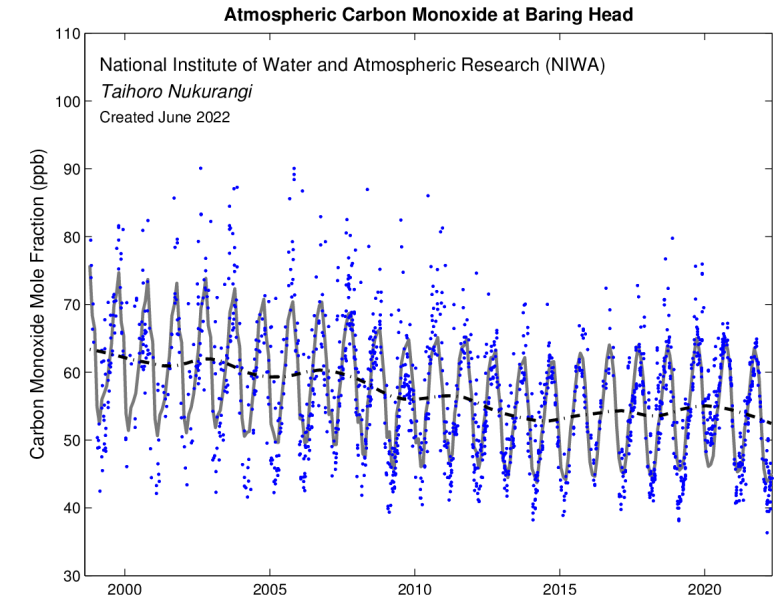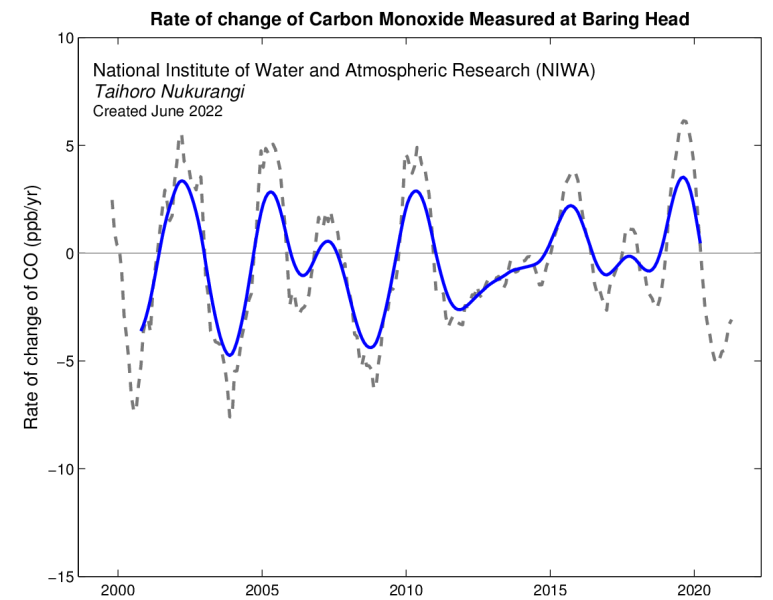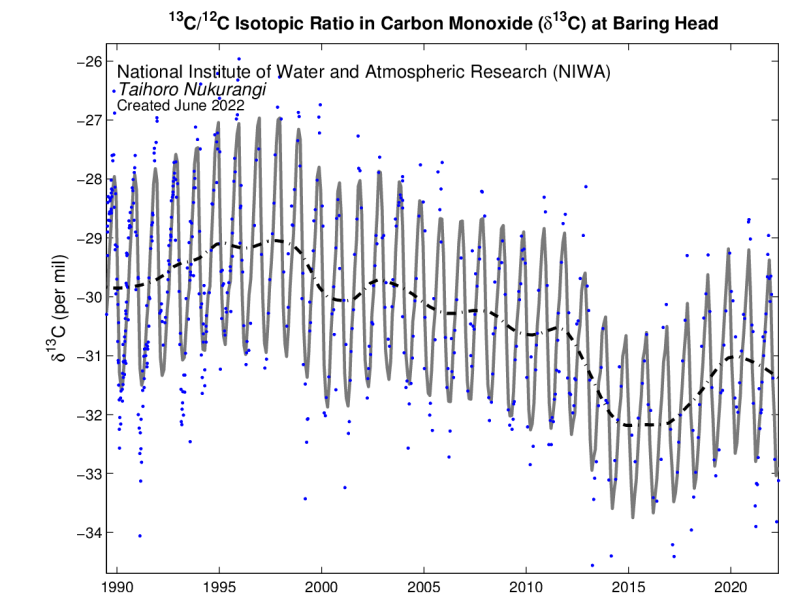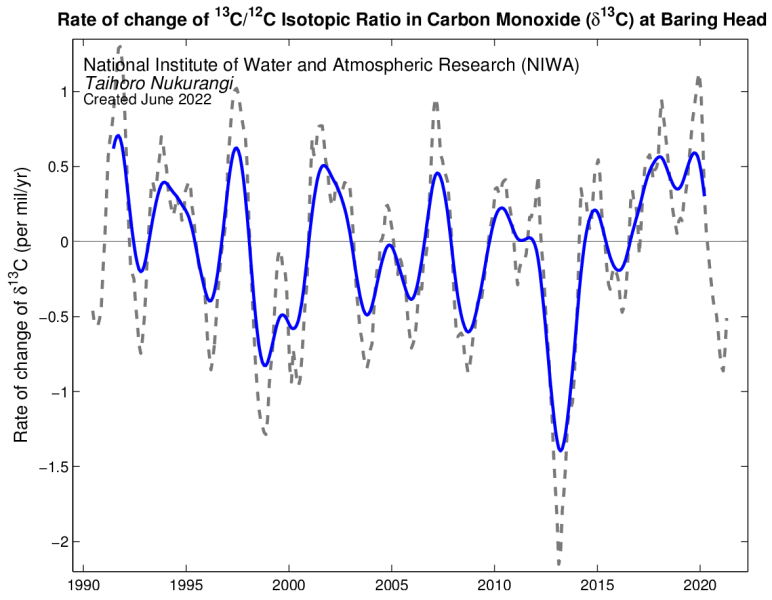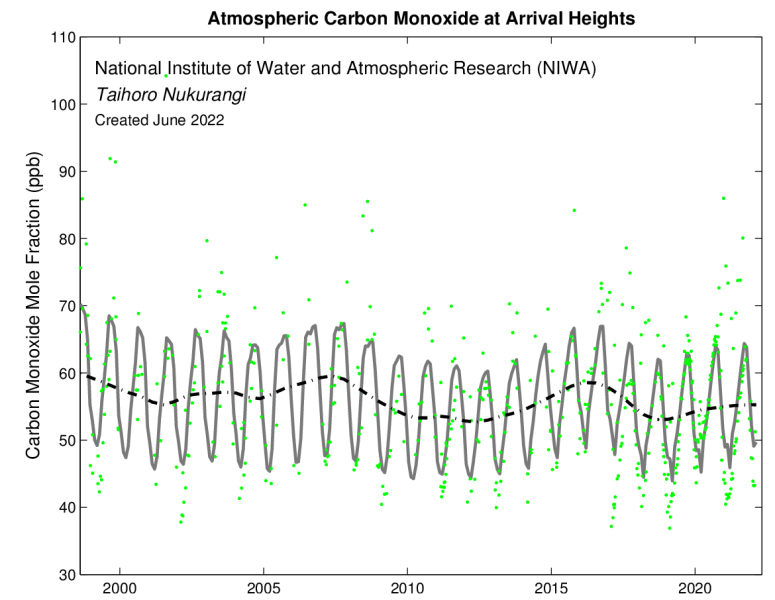Carbon monoxide (CO) plays a key role in atmospheric chemistry because it is the largest sink for hydroxyl radical (OH).
OH is often called the 'detergent' of the atmosphere because it destroys many harmful pollutants. Determination of trends and variability in OH concentrations is critical to understanding whether the 'cleansing' properties of the atmosphere are changing and CO can be used as a proxy for OH and the oxidation capacity of the atmosphere.
Individual flask measurements of CO at Baring Head (blue diamonds) have been fitted with a smoothed curve (gray line) using Seasonal Decomposition of Timeseries by Loess (STL). The black line shows the smoothed curve with the seasonal cycle removed.
The growth rate of CO in the atmosphere calculated from monthly mean data that has had the seasonal cycle removed (grey). The blue line shows the growth rate after it has been smoothed with a 12 month running mean.
d13C in carbon monoxide
Carbon monoxide is a relatively short lived species in the atmosphere, and as it is removed by the dominant sink process (reaction with OH) the isotopic composition is shifted causing a change in the d13CO.
The δ 13CO or 13C/12C isotope ratio in CO is shown as the relative difference from the VPDB standard in permil (‰). Individual flask measurements at Baring Head (blue diamonds) have been fitted with a smoothed curve (gray line) using Seasonal Decomposition of Timeseries by Loess (STL). The black line shows the smoothed curve with the seasonal cycle removed.
*VPDB = Vienna- PeeDee Belemnite standard, a standard originally obtained from a Cretaceous marine fossil, Belemnitella americana, from the PeeDee Formation in South Carolina. This material has a higher 13C/12C ratio than nearly all other natural carbon-based substances. For convenience it is assigned a delta 13C value of zero, giving almost all other naturally-occurring samples a negative delta value. The original sample was used up long ago, but a Vienna-based laboratory calibrated a new reference sample to the original fossil, giving rise to the widespread use of the term Vienna-PeeDee Belemnite standard, abbreviated to V-PDB.
The relative change of 13C/12C in atmospheric CO calculated from monthly mean data that has had the seasonal cycle removed (grey). The blue line shows the growth rate after it has been smoothed with a 12 month running mean.
Arrival Heights
A secondary monitoring station is located at Arrival Heights, Antarctica. Similar trace gas measurements to Baring Head have been performed here though less frequently due to the logistical challenges in Antarctica.
Individual flask measurements of CO at Arrival Heights (green diamonds) have been fitted with a smoothed curve (gray line) using Seasonal Decomposition of Timeseries by Loess (STL). The dashed black line shows the smoothed curve with the seasonal cycle removed.

